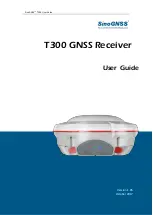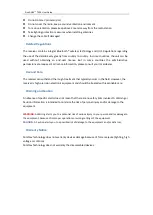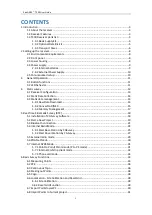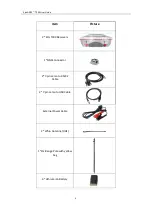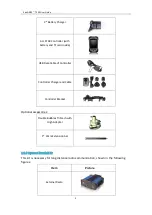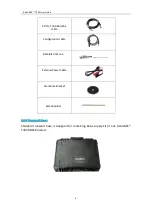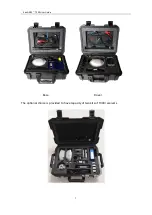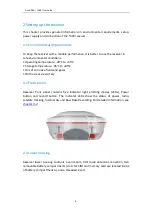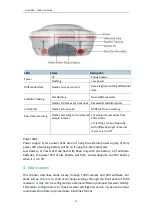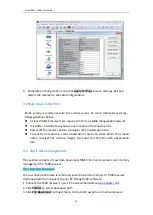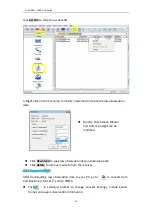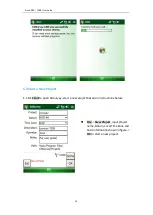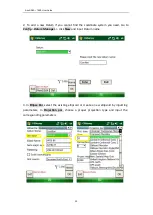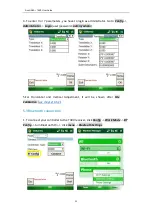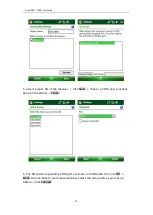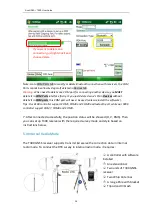
SinoGNSS
○
R
T300 User Guide
9
2.4 Power supply
T300 GNSS receiver supports internal batteries and external power input.
2.4.1 Internal batteries
The receiver is equipped with two rechargeable Lithium-ion batteries, which can be
removed for charging. The T300 receiver adopts the hot swap battery design that
provides you an effective survey workflow. The internal batteries typically provide
about 8-hour operating time as a rover, and about 3.5-hour operating time if
operated as a base station with internal UHF Tx (transmit at 1-2 watts). However,
this operating time varies based on environmental conditions.
Battery Safety
Charge and use the battery only in strict accordance with the instructions below:
–
Do not use or charge the battery if it appears to be damaged. Signs of damage
include, but are not limited to, discoloration, warping, and leaking battery fluid.
–
Do not expose the battery to fire, high temperature, or direct sunlight.
–
Do not immerse the battery in water.
–
Do not use or store the battery inside a vehicle during hot weather.
–
Do not drop or puncture the battery.
–
Do not open the battery or short-circuit its contacts.
Charging the Lithium-ion Battery
Although a dual battery charge is provided, the lithium-ion battery is supplied
partially charged. To charge the battery, first remove the battery from the receiver,
and then place it in the battery charger, which is connected to AC power. Please
obey the following instructions when charging your batteries:
–
Charge the battery completely before using it for the first time.
–
Fully charge takes approximately 6 hours per battery at room temperature.
–
If the battery has been stored for a long time, charge it before your field work.
–
Re-charge the battery at least every three months if it is to be stored for long

